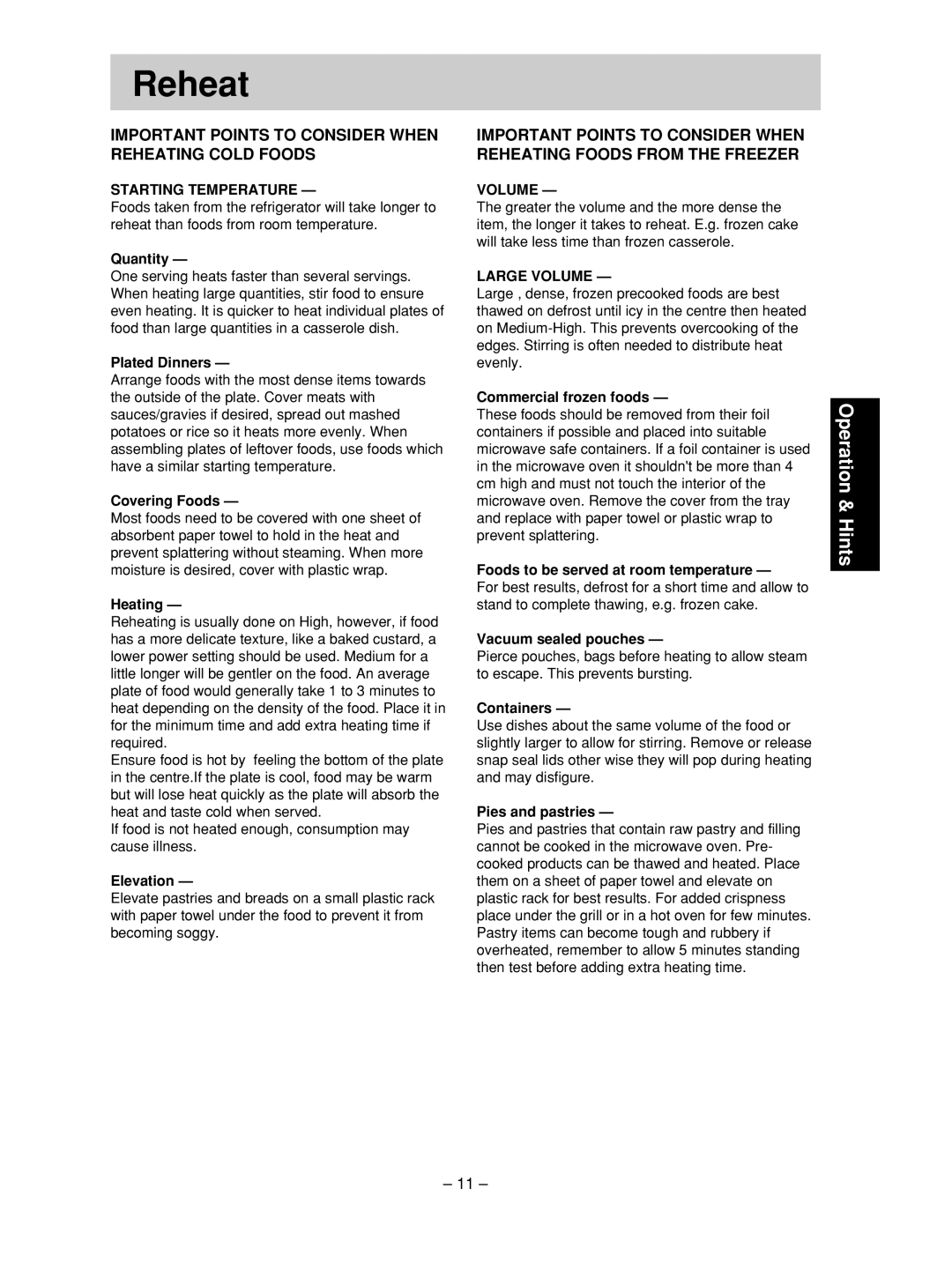NN-SD376S specifications
The Panasonic NN-SD376S stands out as a premium countertop microwave that combines sleek design with advanced cooking technologies. Designed to enhance the convenience of meal preparation, this model is equipped with several features that cater to both novice cooks and seasoned chefs.At the heart of the NN-SD376S is its Inverter Technology. Unlike traditional microwaves that use a pulsing system to regulate power levels, this technology delivers a consistent stream of energy, ensuring even cooking without cold spots. This feature is particularly advantageous when reheating delicate foods such as soups, sauces, or seafood, where precision is key.
The microwave offers a spacious 2.2 cubic feet capacity, accommodating large dishes and containers. Its compact exterior makes it suitable for various kitchen sizes without sacrificing internal space. The stainless steel finish gives it a modern aesthetic that complements any kitchen décor.
One of the key selling points of the NN-SD376S is its smart cooking features. The microwave includes a range of pre-programmed settings tailored for common food types, allowing users to select the desired cooking mode with just the touch of a button. The Genius Sensor Cooking technology takes this a step further by automatically adjusting power and cooking time based on the steam emitted from the food, ensuring optimal results every time.
The microwave also features a keep warm function, which is especially useful for busy households. This setting allows food to remain at the ideal serving temperature until it is ready to be enjoyed. With a quick 30-second button, users can easily add extra time on the fly, making it perfect for those moments when you need just a little more heating.
Safety is another priority for Panasonic, and the NN-SD376S includes child safety locks to prevent unintended use, making it a practical choice for families. Additionally, the easy-to-read control panel is user-friendly, enhancing the overall cooking experience.
Overall, the Panasonic NN-SD376S is a versatile and stylish microwave that showcases innovative technology and thoughtful design. With its combination of inverter cooking, spacious capacity, and smart features, it meets the needs of modern kitchens while streamlining the cooking process.

